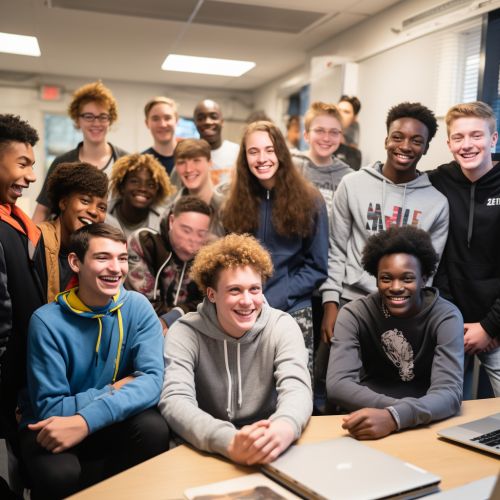School-Wide Positive Behavior Support
Introduction
School-Wide Positive Behavior Support (SWPBS) is a proactive approach to establishing the behavioral supports and social culture needed for all students in a school to achieve social, emotional, and academic success. It is based on a three-tiered model that promotes positive behavior, improves school climate, and enhances academic achievement.


Overview
SWPBS is a framework or approach for assisting school personnel in adopting and organizing evidence-based behavioral interventions into an integrated continuum that enhances academic and social behavior outcomes for all students. It is not a packaged curriculum, scripted intervention, or manualized strategy. Instead, SWPBS is a prevention-oriented way for school personnel to (a) organize evidence-based practices, (b) improve their implementation of those practices, and (c) maximize academic and social behavior outcomes for students.
Theoretical Foundations
SWPBS is grounded in behavioral theory and the prevention research of public health. It emphasizes the use of positive reinforcement to improve behavior, rather than punitive measures. The approach is also influenced by the principles of applied behavior analysis (ABA), which uses scientific methods to understand and improve socially significant behaviors.
Three-Tiered Model
The SWPBS model consists of three tiers: universal (Tier 1), targeted (Tier 2), and intensive (Tier 3). Each tier represents a different level of intervention and support.
Tier 1: Universal
Tier 1 interventions are universal, meaning they are applied to all students in a school. These interventions are proactive and preventive, aiming to reduce the likelihood of behavioral problems before they occur. Strategies at this level might include teaching and reinforcing expected behaviors, providing clear rules and expectations, and creating a positive school environment.
Tier 2: Targeted
Tier 2 interventions are targeted towards students who are at risk of developing more serious behavioral problems. These students might not respond to Tier 1 interventions alone. Strategies at this level might include small group interventions, social skills training, and increased adult supervision.
Tier 3: Intensive
Tier 3 interventions are intensive and individualized. These interventions are designed for students who exhibit significant behavioral challenges, despite receiving Tier 1 and Tier 2 supports. Strategies at this level might include individualized behavior intervention plans, functional behavioral assessments, and one-on-one counseling.
Implementation
Implementing SWPBS involves several key steps, including establishing a leadership team, conducting a self-assessment, creating a behavior support plan, and continuously monitoring and adjusting the plan based on data. It requires commitment from all staff members and a focus on using data to guide decision making.
Benefits and Challenges
Research has shown that SWPBS can lead to improved student behavior, decreased disciplinary referrals, and increased academic achievement. However, implementing SWPBS can be challenging, requiring significant time, resources, and commitment from all staff members. Despite these challenges, many schools have found that the benefits of SWPBS far outweigh the difficulties.
